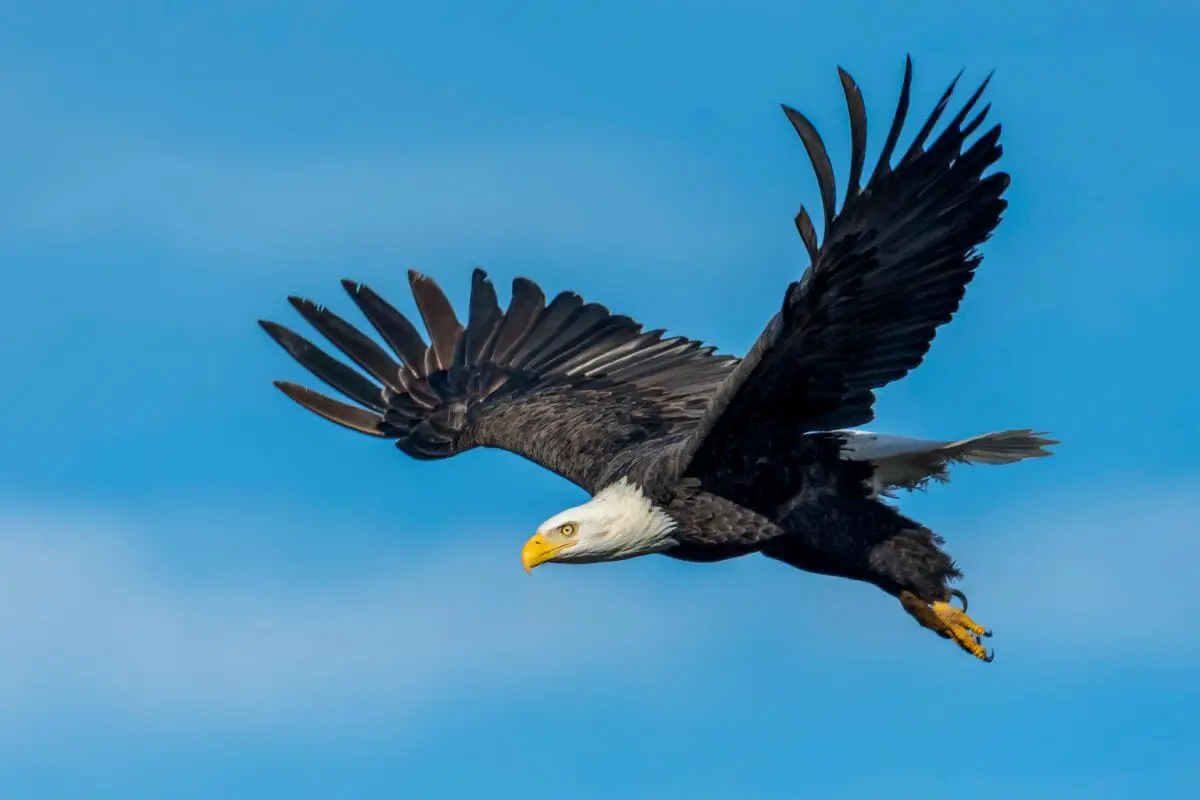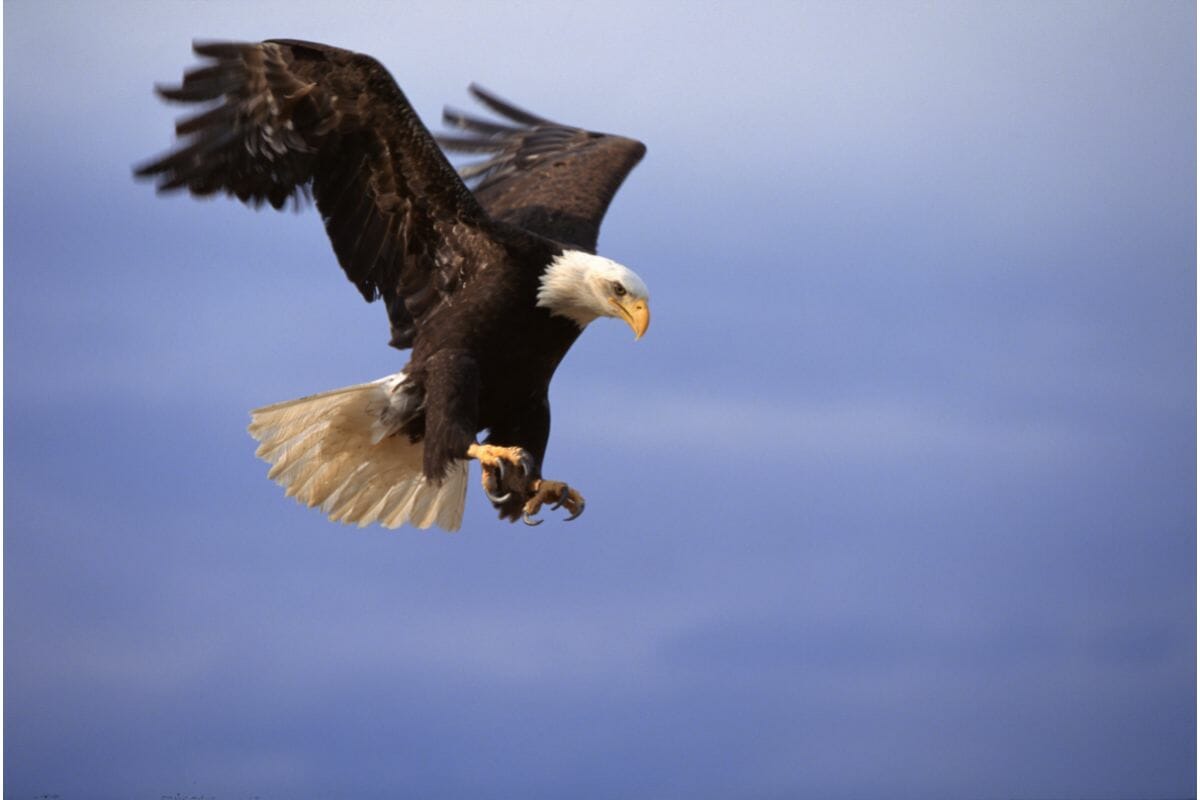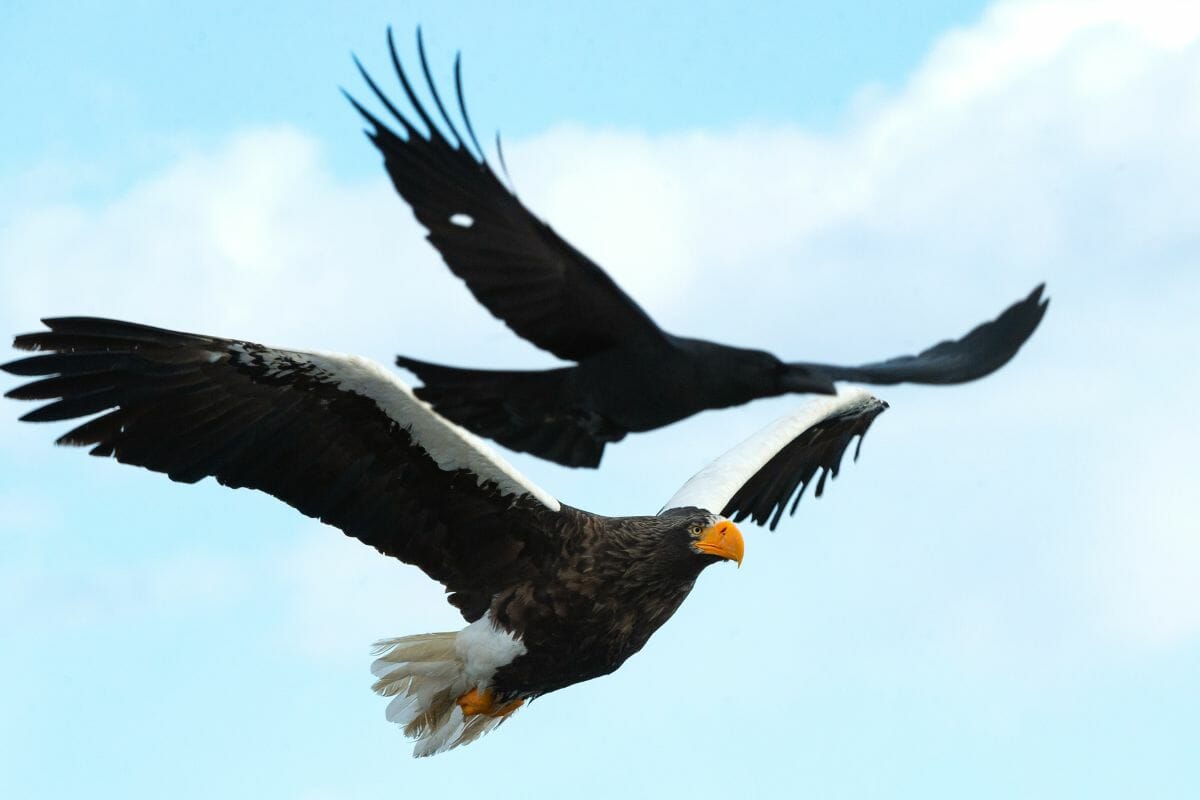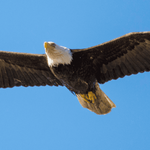Eagles are some of the most well-known and impressive birds of prey on the planet.

They are not really the name for a collective family, but a specific type of bird, a carnivorous bird of prey that can hunt any vertebrate that is over 50 centimeters long
This makes them fast, intelligent, and powerful hunters that rule the skies with a soaring intent that makes even the strongest land animal look upwards in concern.
With so many of these birds flying above our heads, we thought it high time to go through some of the different types of eagle and give the lowdown on some facts about them.
The Four Groups
Eagles are often informally categorized into four different groups: fish eagles, booted eagles, snake eagles, and harpy eagles.
The reason for this informal designation is that eagles are necessarily closely related, they just display similar traits and are large predatory birds.
Fish Eagles
These are the eagles that primarily feed on fish, as a fresh food source or as a carrion based food source.
Bald Eagle
Of the fish eagles, the most well-known and impressive specimen is the Bald Eagle.
This bird is not only one of the largest birds in America, but it is the symbol of the United States as well, appearing on the seal of the country and being used as imagery when describing America in many circumstances.
This eagle primarily eats fish as part of its diet, but it also supplements its diet with birds, mammals, and other prey as well.
It has a range that spans the entirety of the North American continent, from Alaska and the Yukon in the north to Florida and Mexico in the south.
The reason for its name is that the head plumage of the eagle is completely white compared to the rest of the body, which is a dark brown.
Steller’s Sea Eagle
Steller’s sea eagle is one of the largest birds of prey in the world.
It resides only along the Sea of Okhotsk, being around the coastlines of the Koreas, Japan, Russia, and occasionally China.
These birds can have a wingspan of between 6.5 to 8.2 feet, and they are willing to take on almost any prey that wanders into their range.
Excluding the Asiatic black bear, there are no other animals even close to its size that could climb the trees (see also: Animals That Climb Trees)or perches that it nests on.

making it the most formidable predator to any arboreal or perching animal that exists within its range.
Booted Eagles
Sometimes referred to as ‘True Eagles’, these birds are most commonly referred to as booted eagles because their lower legs are feathered as well.
Little Eagle
Part of the Hieraaetus family of eagles or Hawk eagles, the little eagle – like the rest of its family – is very small, only being about 21 inches at most across.
While this size makes it a target, it has also helped it adapt to a great many environments.
Its range is across the entirety of Australia, from arid deserts to open grasslands to dense forest, with it adapting easily to them all.
Its small body allows for it to maintain a low temperature and an ability to shelter from the intense sunlight that Australia experiences, however this means it does have an incredibly high metabolism to compensate.
Surprisingly, this tiny eagle is also the closest relative of the largest eagle to ever exist: Haast’s Eagle, a bird that hunted giant Moa in New Zealand (birds larger than ostriches).
Snake Eagles
These birds need their own classification just for what they hunt more than anything: snakes.
That’s right, there is a whole subset of predatory birds that hunt one of the most feared animals on the planet.
Brown Snake Eagle
These birds are solitary creatures that reside in West, East and Southern Africa.
Although they are rarely seen, they are not endangered, they simply have an enormous range and are wary of others.
They hunt one thing only: snakes. It doesn’t matter what the snake is, venomous or harmless, they will hunt and eat them.
There have been reports of boomslangs, cobras, and even black mambas being killed by these birds.
Before they carry their prey back to their nest, they will always decapitate it first.
This is made more impressive by the fact that these birds are about average sized for raptors, with only about a 5 to 6 foot wingspan.

Harpy Eagles
Harpy Eagles, otherwise known as Giant Forest Eagles, are the largest and most impressive of the eagles.
They are noted not just for their size, but also a plume of feathers on their head, like a crown.
The Philippine Eagle
A critically endangered species and the largest in terms of length and wing surface area, the Philippine eagle flies between the thousands of islands of the Philippines (which it is endemic to) searching for prey.
With no other large predators able to adapt and survive on these islands, the Philippine eagle became the dominant predator and became enormous.
It will eat anything from monkeys to large birds to deer and even small pigs (Also check out Types Of Pigs).
In fact, the only creatures native to the Philippines that a Philippine eagle will not try to take down are humans, giving you an idea of their power.
Harpy Eagle
Steller’s may have the longest wingspan, the Philippine Eagle may have the largest surface area, but in terms of weight, bulk and raw power, the Harpy Eagle is the top eagle with only the extinct Haast’s Eagle beating it.
The Harpy Eagle lives in the rainforests of Central and South America and when it is full-grown, it is at the top of the food chain.
It has the largest talons of any eagle, and its strength means it can lift animals in its own body weight and fly (see also: Animals That Fly) them great distances.
It primarily feeds on monkeys, sloths, and other tree dwelling animals. If pushed, they will even take life stock and compete with other formidable predators, like Jaguars.
Conclusion
There are many different types of eagle out there, each one impressive and skilled in its own way.
Each of them have adapted to the habitats they found themselves in and often became the top of the food chain, thanks to their ability to survive in even the toughest environme









